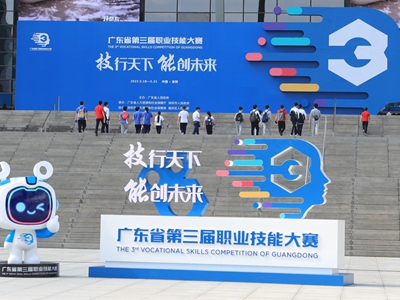GD ranks No. 1 in innovation competitiveness
Writer:

GUANGDONG Province has taken over Jiangsu as No. 1 on the regional innovation capability ranking for 2017, according to a report released in Beijing last week.
The report, conducted by China Science and Technology Development Strategic Research Team and China Entrepreneurship and Innovation Management Research Center under the University of Chinese Academy of Sciences, features influential research on the ability of regional innovation.
It is the first time that Guangdong has taken over Jiangsu since 2008.
The report is comprised of five first-grade index systems including knowledge creation, knowledge acquirement, enterprise innovation, innovation environment and innovation achievements. The system is divided into three levels of sub-systems with various evaluation factors.
Guangdong earned a score of 55.24 in comprehensive innovation capability, surpassing Jiangsu’s 53.30 points. Beijing, Shanghai and Zhejiang rounded out the top five places.
In the first-grade index, Guangdong ranks No. 4 in knowledge creation, knowledge acquirement, and ranks No. 1 in enterprise innovation, innovation environment and innovation achievements.
The report showed regional innovation capabilities in provinces, autonomous regions and municipalities have improved in 2017. The disequilibrium between regions has set higher requirements for coordinated development.
Eight regions — Guangdong, Hubei, Hunan, Liaoning, Jiangxi, Ningxia, Yunnan and Qinghai — have improved their ranking, with Hubei advancing three places. Nine regions moved backwards, and Heilongjiang Province dropped four places.
Despite the gap between the eastern region and central and western regions, the western regions are catching up.
Guangdong has the advantage of a high-end open economy, bustling foreign trade, a dynamic market and innovative environment, while Jiangsu shows its strength in enterprise innovation, and research and investment in technological renovation.
Guangdong is planning to establish the Guangzhou-Shenzhen Science and Technology Innovation Corridor, covering 11,000 sqkm in Guangzhou, Shenzhen and Dongguan.
With the best innovation resources accumulated over the past 40 years of China’s reform and opening up, the corridor will be the nation’s major innovation engine and gateway as the province connects to global innovation trends. (Han Ximin)
According to the planning, the corridor, set for completion by 2030, will become the core of the Pearl River Delta National Independent Innovation Demonstration Zone and a globally influential innovation enterprise cluster for the Guangdong-Hong Kong-Macao Greater Bay Area and even China.
In recent years, Guangdong has adopted the innovation-driven development strategy and upgraded its industrial structure.
With a total area accounting for 15% of the Pearl River Delta, Guangzhou, Shenzhen and Dongguan yield about 60% of the region’s GDP. The three cities have laid a solid foundation for an innovative economy, being home to over 60% of the high-tech enterprises in the province.
Eight local enterprises in the area have entered the list of the Fortune Global 500 and world-renowned enterprises are developing steadily here, including Huawei, Tencent, ZTE, DJI, OPPO and Vivo.











